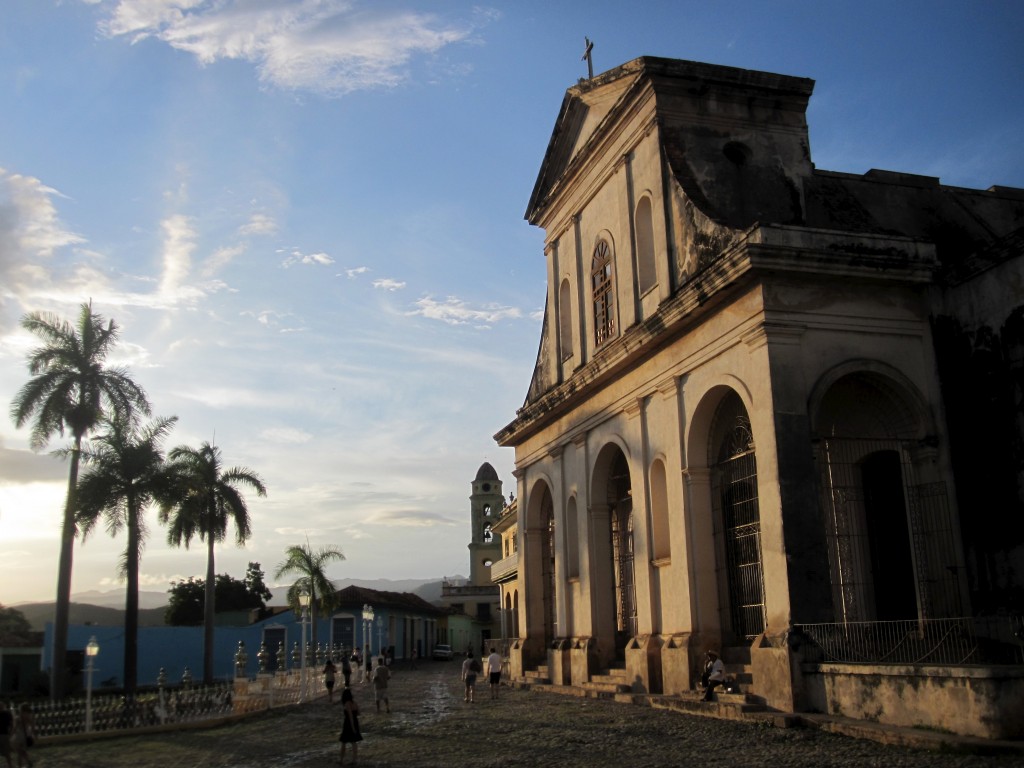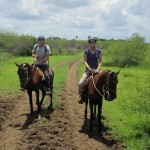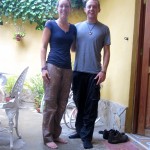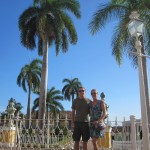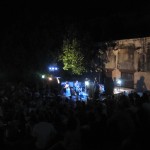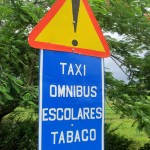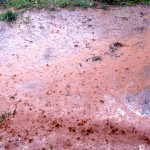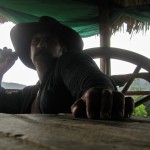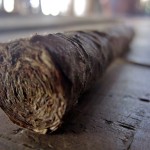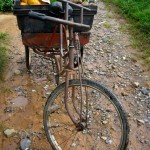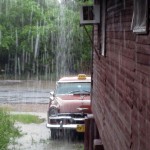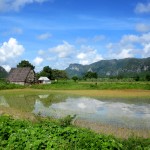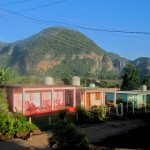I’m writing from our last bus journey, heading back to Havana before flying home on Monday. Wow – it’s been good! I’m listening to ‘Salsa Celtica’ a crossover South American/Scottish group, which seems appropriate for our upcoming return.
We’ve spent the past couple of weeks first in crumbling Havana, then colourful Trinidad, and finally the luscious tobacco country of Viñales. All very different, although some familiar Cuban themes of friendliness, warmth and good hearty food thread them together.
In between the glorious sunshine, there has been one other thing in common – tropical rainstorms in the afternoons: it is rainy season here. Our first taste of it was while out horse-riding in Trinidad, as a monstrous thunderstorm appeared over the nearby hillside. We sped up, but it soon caught us, cantering along the open road and getting absolutely drenched. By the time we reached the town it was as if someone was repeatedly throwing buckets of water at each of us; a ‘natural shower’, as our guide put it – although definitely a power shower at that! We then went out for a night of open-air music in Trinidad that was rained off in a storm that hit after the third song – this was after they’d spent over an hour sound checking with the lightening approaching. Poor timing, perhaps! And finally, our Viñales beach experience: beautiful white sand, turquoise water, long stretch of beach to ourselves – utter perfection, if it wasn’t for the colossal thunderstorm that arrived 30 minutes after we did. Now, we’re no stranger to beaches and rain and thought we’d just adopt the wait-it-out-in-the-sea tactic: you can’t get any wetter if you’re already underwater. But we soon realised that isn’t quite compatible with nearby lightning strikes in the water around, even if they do look pretty cool – instead retreating to the undergrowth nearby to shelter, and apparently provide the mosquitos with lunch. You can’t say we aren’t thinking of the local wildlife.
Trinidad brought us a taste of Cuban picture-postcard life: wandering down cobbled streets surrounded by colourful houses, admiring the architecture and soaking up the live music (and rain). Viñales gave us the Cuban countryside: the bright red soil evoking memories of our time in Asia, while the tobacco plantations there bring Cuba one of its most famous exports: the hand-rolled Cigar. We were shown around one of the black wooden tobacco drying houses that are scattered among the fields and then shown quite how quickly a cigar is rolled while the farmer told us of the carcinogenic addictive chemicals the government add to their cut of the tobacco – while his was entirely organic. Obviously it was in his interest to push his cigars, but this is just the sort of accusation we pin on the tobacco giants in the west – it was very interesting to see such a capitalist attitude being attached to the communist state here.
We met up with our Finnish friends who we travelled with in Bolivia and Peru and spent a lovely few days with them, revisiting a beautiful beach on the coast near Viñales – although the idyll of a stretch of sand to ourselves was somewhat spoiled by the arrival of three bus-loads of Cuban holidaymakers, complete with a pumping sound system – and sadly playing the latest hits from Miami and not Havana.
To get to the beach, we had hired a taxi for the day, and our driver gave us a fascinating insight into life as a local. First up was that Cubans are not allowed in places where there are boats, unless they have a license – lest they flee to Miami in something more powerful than a flimsy raft. Fishermen have to sign in and out, and are not allowed big engines, and the only island Cubans are allowed to visit is on the south side of the county, a long way from any other mainland. It’s pretty clear that not everything is rosy in any country that has to physically restrain its inhabitants from leaving.
Then there’s the economic disparity, which you might not expect for a communist state, but has become pretty significant in recent years. Our driver’s wife is a qualified doctor, earning a paltry $22 USD per month. Bear in mind here that a standard international definition of severe poverty is living on less than a dollar a day. And our taxi driver – well, he has access to the tourist economy and so earns $50 USD in a single day when his car is hired out. There is obviously more complexity to this than just money and benefits – a desire to be a doctor and help people, for example – but it is a fascinating illustration of inequality and social worth even in a society that has largely eschewed capitalism. I guess you could also use this to argue the system is working – there are still plenty of doctors here in spite of the relatively poor wage, and they’re becoming doctors rather than taxi drivers because they believe in the state? Perhaps.
Either way, you can’t help but look at him driving an authentic 1956 Chevy and see it as representative of both sides of a country in flux. On one side is the iconic old car, battered but lovingly repaired and patched up, symbolic of the country and its ability to survive and make do in spite of the US sanctions; on the other is an economy which needs the benefits of capitalist tourism to develop and survive – but where the inequities that introduces undermine the very fabric of the country people seek to visit.
Simon
- Church in Trinidad, complete with mildew
- View from a tower over Trinidad, to the sea beyond
- Greenery in Trinidad
- Colour and Cobbles
- This is the range of butter on offer…
- Freshly carved in a pottery we visited
- Iconic imagery
- This guy was big!
- Campisino guitarist
- Horseriding
- After getting absolutely drenched in the rain
- Trinidad main square
- Sunset in Trinidad
- Live music in the square
- How many people can you fit in a Beetle?
- Beware Taxis, Buses, Schoolchildren… and Tobacco famers?
- Rainstorm
- Tobacco seeds
- Tobacco farmer
- A freshly rolled cigar
- Home delivery?
- Idyllic beach
- It was dry when we first got to the beach…
- Evening sky in Vinales
- Sunset on the clouds over Vinales
- Rice paddies in Vinales
- Rocking chairs outside houses in Vinales
- Our taxi driver
- Jump!
- On the beach with the Finns


